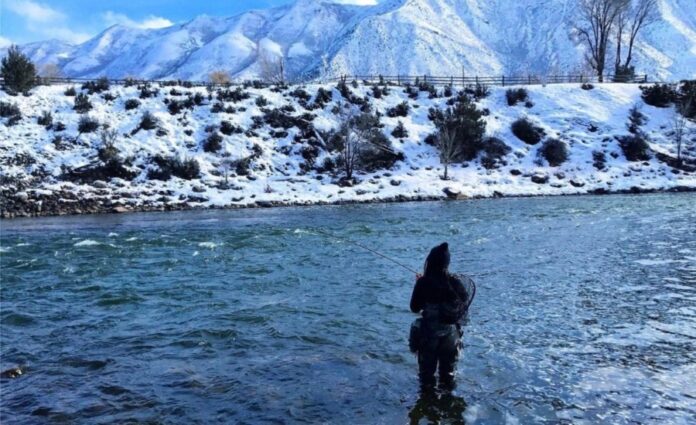Written by: John Herzer, Blackfoot River Outfitters, Missoula, MT
All photos by Blackfoot River Outfitters
Winter fly-fishing is a delight. Maybe it’s the solitude, or the change from boating to wade fishing, but more than likely, it’s the change in success rate. Contrary to what many fly fishers think, a good winter day can actually surpass a good summer day, so don’t let another winter go by without getting out on your favorite trout stream–chances are, the competition will be light, and the action heavy. Here are three quick and easy tips that can help turn your next winter outing into a more fruitful fishing endeavor.
1. Engage Your Eyes
Be sure to use your eyes first, don’t just race to rig up the fastest and then slog through the snow straight to the river, only to stare blankly at your bobber. Before you cast, watch for flashes and shadows, especially near structure transitions and depressions on the bottom. And when it’s time to move, I typically head downstream, because I find that subtle features and bottom-hugging trout tend to show up better when viewed down-and-across.

2. Use Multiple Angling Techniques
Traditional indicator nymphing may be the most common approach to winter fishing, but you should be prepared to use a variety of other tactics, as well, based on your careful observations. In order to best ply the deeper edges, for example, you may want to switch to a tight-line setup, while the shallower tailouts might be best probed with a dry-dropper rig, which will keep your nymph rolling off the bottom without snagging.
If the river has experienced recent drastic weather changes, look carefully along the banks for frozen bait fish trapped in the ice. When these minnows end up back in the river, they become free-floating protein snacks which the trout snap up. If you see even a couple of these, tie on a smaller streamer ahead of your nymph. Cast your streamer-nymph combo down and across (steelhead style), keeping the line tight and letting it swing slowly, stepping downstream after each cast.

3. Fish All The Water
Years ago, I was convinced that the only place to fish during winter was in the deepest pools. We used to race each other to what we called the “sweet spots”: areas typically located at the top end of a run, just below the riffle, where there is a distinct drop-off marked by slowing current, top chop, and a change in water color. The trout really pile up here–especially in the winter–so you’ll want to take extra time to fish these areas thoroughly.
But it turns out that those aren’t the only spots to catch fish during winter, and over the years, I’ve learned it’s worthwhile to cover water, rather than just posting up on the sweet spots. Stepping downstream, the river typically widens out and slows down, depositing smaller substrate in the shallower water. Here’s where I start looking for actual fish, peering into those little swirling current windows and picking out distinctive lines, shadows, and color that give up a trout’s position. This is where a dry/dropper rig is surprisingly effective.
John Herzer is owner and operator of Blackfoot River Outfitters in Missoula, MT.
Credit: Source link





























